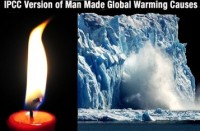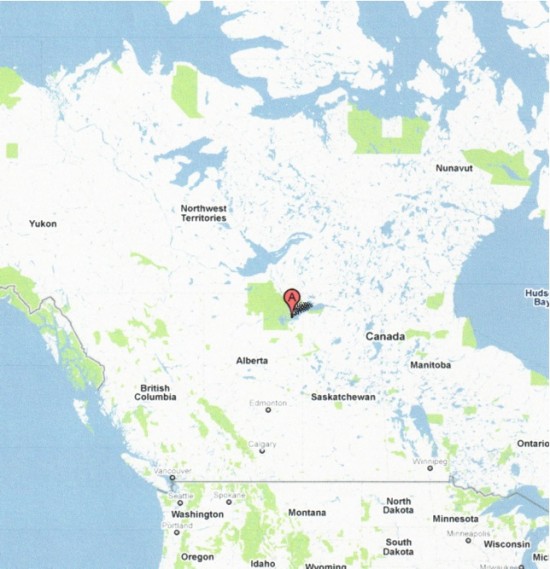 “…The blackest billingsgate, the most ungentlemanly insolence, the most yahooish brutality is patiently endured, countenanced, propagated, and applauded. But touch a solemn truth in collision with a dogma of a sect, though capable of the clearest proof, and you will soon find you have disturbed a nest, and the hornets will swarm about your legs and hands, and fly into your face and eyes.” ~John Adams
“…The blackest billingsgate, the most ungentlemanly insolence, the most yahooish brutality is patiently endured, countenanced, propagated, and applauded. But touch a solemn truth in collision with a dogma of a sect, though capable of the clearest proof, and you will soon find you have disturbed a nest, and the hornets will swarm about your legs and hands, and fly into your face and eyes.” ~John Adams
Adams is talking about contrarians, people who challenge prevailing opinion whom he sees as a positive force in society. Now those pushing the myth that humans are causing warming or climate 
This is part of the claim to the moral high ground by environmental groups and extremists. It also involves the claim that every change is caused by human activity, which reaches a height of illogic with the Intergovernmental Panel on Climate Change (IPCC) claim that the increase in atmospheric CO2 is due to humans and is almost the sole cause of global 
Vast Unoccupied Areas
There is no doubt humans alter the world, however, it is far less than depicted in environmentalist reports and documentaries. The world map shows vast areas virtually unoccupied. Years ago while on a search in northern Canada for a missing US private airplane, the brother of a missing passenger flew as a spotter. By noon he angrily accused us of flying in circles. We had actually covered most of Wood Buffalo National Park (Figure 1), which is three times larger than Connecticut. It all looked the same with no evidence of humans at all. We flew him back to Fort Chipewyan along the Peace River letting him follow on a map. His only comment on landing was, “I will never worry about overpopulation again.”

Figure 1: ‘A’ marks Fort Chipewyan. Adjacent green area Wood Buffalo Park.
Source: Google Maps
The questions are how much and how detrimental are the impacts of human activity? The answers are complicated by an underlying assumption of the new religion of environmentalism that humans shouldn’t be here, so anything they do is wrong. The other is that the damage is irredeemable. It is complicated by political exploitation from the Club of Rome through to the IPCC.
Measuring Human Impacts
A huge deficiency in the debate is the lack of detailed reconstruction of natural conditions before human impact. We still have extremely limited information and understanding about nature and natural mechanisms. This is especially true about climate. The IPCC made things worse by rewriting paleoclimate history by trying to get rid of the Medieval Warm Period. More recently, manipulation of the global temperature record takes us further from the truth. I realized early in study of the Earth’s past that the limits on information and rigidity of academic thinking that Adam’s identified were much of the problem.
An undergraduate course on Soils triggered my interest. The formula for soil formation included the letter “O” for organic that included everything except humans. German geography recognized the impact by distinguishing Landschaft, the natural landscape, and Kulturschaft, the human modified landscape. However, there were few measures of the difference over time. I knew about George Perkins Marsh work, Man and Nature (1864) but it was William L Thomas’ 1956 publication Man’s Role in Changing the Face of the Earth that gave me a theme for my major theses.
An Honours thesis titled, Some Philosophical Considerations of Humans as a Source of Change, tried to put the issue in a historical and intellectual context. Although human population numbers were low they could have quite extensive impact, especially through use of fire. Before World War II, the debate was about humans being environmentally and climatically determined. During and after the War the shift was driven away from those ideas by Nazi use of climatic determinism to promote racial superiority.
A Masters thesis titled, The Significance of Grain Size and Heavy Minerals Volume percentage as Indicators of Environmental Character, Grand Beach, Manitoba, developed understanding of the relationship between energy inputs and how they shape the environment.
A research paper on the relationship between climate and history introduced me to the work of Hubert Lamb and Reid Bryson. It underscored the lack of long detailed 
There are three general areas of weather and climate data that reflect the division for anyone recreating environmental change over time: the instrumental period covering about 100 years; the historic period of written records over approximately 2,500 years; and the geologic and biologic record covering the rest of earth’s history. A major problem is the changing degree of accuracy from one period to the next. There are some important records because they span these periods. Dendroclimatology involves recreating climate conditions from tree rings and is valuable because it covers the instrumental and historic records.
CRU/IPCC Distortion Of Inadequate Records
The tragedy is the people at the Climatic Research Unit (CRU) through the IPCC used and abused tree ring records. First by assuming they reflected only temperature, then selecting certain trees and certain sites, and finally linking it incorrectly to a doctored instrumental record. The manipulated tree ring data provided the handle of the infamous ‘hockey stick’. Phil Jones’ still undisclosed claim of unnatural temperature increase in the last 130 years of the instrumental record was the blade. (Source)
They were leaders of the sect with the dogma of anthropogenic global warming. However, once McIntyre and McKitrick broke the stick and the emails were leaked from the CRU disclosing their machinations they became the hornets, especially through their blog at Realclimate,
They attacked contrarians, as Adam’s predicted, but they distorted and distracted from the real question and measurement of how much things change without human activity. Resolution is almost impossible until we have adequate long-term records. As Alexis Carrel wrote “A few observations and much reasoning lead to error; many observations and a little reasoning to truth.”


